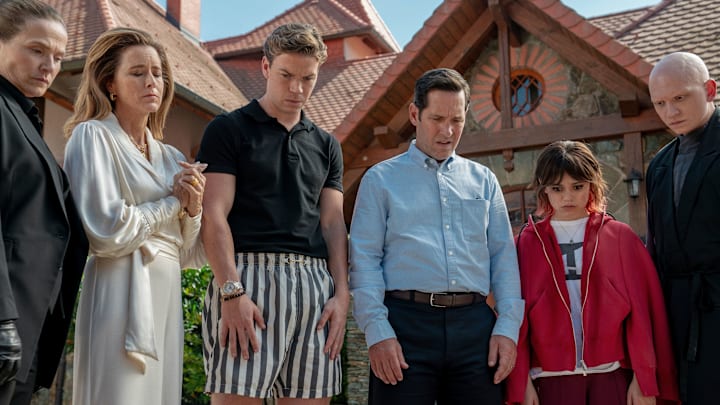Close your eyes and think of a unicorn. What do you see? Probably a vision of a cute horse perhaps with a rainbow maine and a glowing horn. This is how most of us see unicorns, however, A24s latest, Death of a Unicorn, flips this narrative on its head.

Death of a Unicorn tells the story of Elliot (Paul Rudd) and Ridley (Jenna Ortega) a father-daughter duo who accidentally hit and kill a unicorn on their way to a billionaire’s home. They decide the solution to killing this mythical creature is to throw it in the trunk of their car and, of course, this goes array as they arrive.
The billionaire takes notice of the unicorns' powers and the ability they have to cure his sickness. As Odell (Richard E Grant) and his family begin to realize the money that can be made from the unicorn’s healing properties, Elliot decides to go a different route in the form of active protest and art history major vengeance for unicorns.
As Elliot researches the unicorns this is where we see the deviation of the unicorns from their traditional symbols of purity and gentleness to vengeful creatures. Death of a Unicorn does a phenomenal job of creating the lore behind the creatures seeking vengeance for their young. This happens through the tapestries that Elliot uncovers in her research that depict “The Hunt of the Unicorn." The art in question portrays unicorns as both majestic beings, but also savage creatures. Elliot explains the tapestries are warnings and shows them to the group. An image of unicorns disemboweling people on it sets the tone for the rest of the flick.
The film makes it clear that unicorns are hunting those who are selfish and greedy people involved in corruption, as Odell is. Rather than being shown as whimsical and cute these unicorns embody a supernatural force seeking justice. This carries the film’s dark comedic and satirical tone well and turns the beloved cotton candy icon into something more unsettling and vicious.
Death of a Unicorn does a wonderful job at creating a commentary on human greed and exploitation through the use of mythical creatures. By reimagining unicorns as vengeful the movie effectively critiques rich people who feel they can control and consume anything, even something as mystical as a unicorn. The unicorns who seek justice throughout the film take a whole new meaning to, “eat the rich,” as they literally do in the film. Ultimately, the movie flips the fairy tale idea of unicorns on its head to show how the wealthy view everything—even magic—as something to possess, used and ultimately destroy.
Death of a Unicorn is currently in theaters everywhere.
